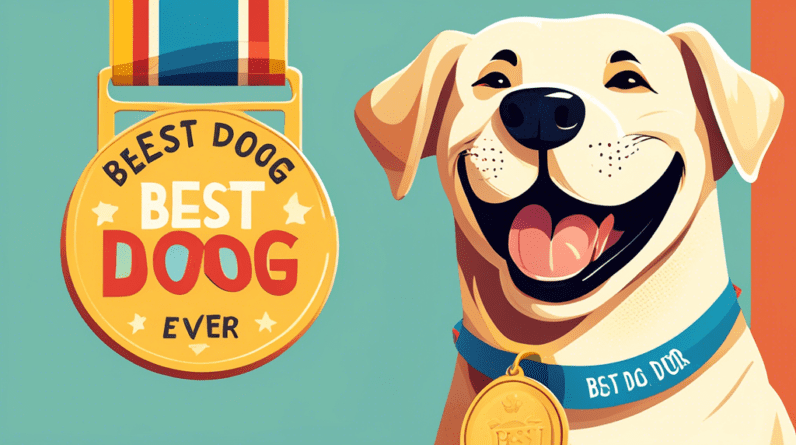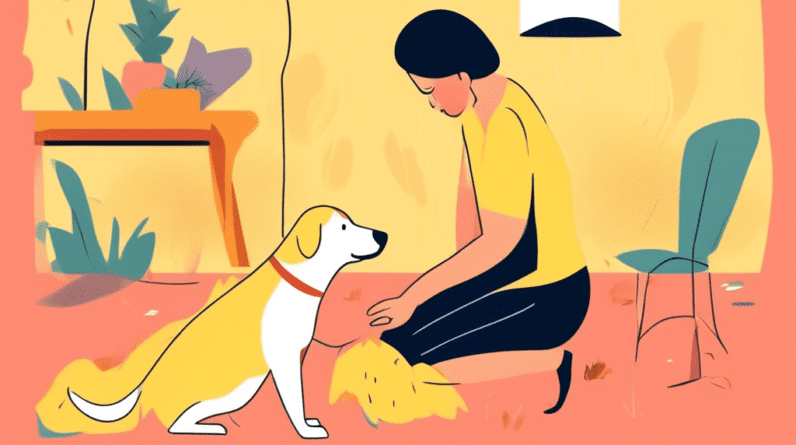
Labrador Retrievers, with their infectious enthusiasm and wagging tails, are undoubtedly one of the most popular dog breeds globally. Their friendly nature and love for, well, just about everything, often lead owners to wonder, Would my Labrador benefit from having a canine companion? The answer, like most things concerning our furry friends, isn’t a simple yes or no. It depends on a tapestry of factors woven together—your Labrador’s personality, your lifestyle, and the dynamics you envision in a multi-dog household.
Unpacking the Labrador Personality: Social Butterflies or Selective Socializers?
Bred as retrievers, Labradors generally possess an affable and social disposition. They often thrive in the company of other dogs, especially when properly socialized from puppyhood. Early and positive exposure to other dogs, through puppy classes, park visits, and interactions with well-behaved canine pals, helps lay the foundation for harmonious multi-dog relationships.
However, it’s crucial to remember that each Labrador is an individual. While many revel in the company of their own kind, some might be more selective about their canine companions. Factors such as:
- Age
- Past experiences
- Individual temperament
can all influence their affinity for sharing their space and humans with another dog.
Your Lifestyle: The Heart of the Decision
Before welcoming another furry friend into your home, it’s vital to assess your lifestyle through a multi-dog lens. Consider the following:
1. Time Commitment: Twice the Love, Twice the Responsibility
Dogs, especially a high-energy breed like Labradors, require a significant time investment. Are you prepared to double down on:
- Walks and exercise
- Training sessions
- Grooming routines
- Vet appointments
- Playtime
Remember, each dog deserves individual attention and care. Ensure you can provide ample love, time, and resources for both your furry companions.
2. Space: Room to Roam and Retreat
Labradors are active dogs that need space to stretch their legs and burn energy. Having two dogs amplifies the need for ample space, both indoors and outdoors. A cramped environment can lead to stress and potential friction between your canine companions.
Do you have a securely fenced yard where your dogs can play freely? Is your home spacious enough to accommodate two dogs comfortably, providing them with separate resting areas if needed?
3. Financial Considerations: Doubling Up on Expenses
Owning a dog is a financial responsibility, and owning two dogs doubles those responsibilities. Food, treats, toys, vet care, grooming—all these expenses add up. Ensure you’re financially prepared to provide for the needs of two dogs before expanding your furry family.
Potential Benefits: The Joys of a Canine Duo
While the decision to get a second dog is a significant one, it can also be incredibly rewarding. Here are some potential benefits of having two dogs:
1. Companionship and Entertainment: Banishing Boredom
Labradors are social creatures that thrive on companionship. Having another dog can provide your furry friend with a built-in playmate, reducing boredom and loneliness, especially when you’re away from home. This companionship can be particularly beneficial for Labradors who suffer from separation anxiety.
2. Enhanced Exercise and Mental Stimulation: A Recipe for a Happy, Tired Dog
Two dogs mean double the fun and double the exercise! Canine companions encourage each other to stay active, engaging in play and exploration that keeps them physically and mentally stimulated. This can be especially helpful for keeping your Lab’s energy levels in check and preventing destructive behaviors stemming from boredom.
3. Learning and Socialization: Pawsitive Influences
Dogs learn from each other, and a well-adjusted older dog can be an excellent role model for a younger pup. They can teach each other appropriate social behaviors, bite inhibition, and household routines. Observing another dog navigating the world can also boost a puppy’s confidence and accelerate their learning process.
Potential Challenges: Navigating the Dynamics of a Multi-Dog Household
While there are numerous benefits to having two dogs, it’s essential to be aware of potential challenges:
1. Personality Clashes: Finding the Right Match
Even the friendliest dogs can experience personality clashes. Careful consideration of your Labrador’s temperament and energy levels is crucial when choosing a potential canine companion. A high-energy, playful Labrador might not be the best match for an older, calmer dog who prefers leisurely strolls to rambunctious play.
2. Resource Guarding and Competition: Establishing Boundaries
Introducing a new dog can sometimes lead to competition for resources such as food, toys, attention, or even a favorite sleeping spot. It’s crucial to establish clear boundaries from the outset, feeding dogs separately, providing each with their own toys, and managing interactions to prevent resource guarding behaviors. Early training and positive reinforcement play a vital role in establishing a harmonious multi-dog household.
3. Increased Noise and Chaos (Especially During Puppyhood): Embracing the Mayhem
Let’s face it, two dogs can be louder and more chaotic than one, especially if one or both are puppies. Be prepared for an increase in barking, playful nipping, and general puppy mayhem. Patience, consistency in training, and a sense of humor are essential for navigating the initial adjustment period.
Making the Decision: A Thoughtful Approach
The decision to get a second dog, particularly for your beloved Labrador, is a deeply personal one. There’s no one-size-fits-all answer. It requires careful evaluation of your Labrador’s personality, your lifestyle, and your ability to meet the needs of two dogs.
Tips for Introducing a Second Dog: Setting the Stage for Success
If you decide that adding a furry friend to your family is the right choice, here are some tips for a smooth introduction:
1. Gradual Introduction: First Sniffs and Neutral Territory
Avoid overwhelming your Labrador with a sudden introduction. Start by having the dogs meet in a neutral area, such as a park, where they can sniff each other on leash without feeling territorial. Keep the initial meeting short and positive, allowing them to gradually become accustomed to each other’s scent and presence.
2. Supervised Interactions: Safety and Positive Reinforcement
Once the initial introduction goes well, allow the dogs to interact in a controlled, supervised environment, preferably your fenced yard. Keep them on leash initially, gradually allowing more freedom as they exhibit comfortable body language. Reward positive interactions with praise and treats, reinforcing good behavior and building a positive association with each other.
3. Separate Spaces and Resources: Preventing Conflict
Provide each dog with their own designated space, complete with a bed, food and water bowls, and toys. This helps establish boundaries and reduces the likelihood of resource guarding. Feed your dogs in separate areas to minimize competition and potential conflict. Supervise access to high-value treats and toys, ensuring fair play and preventing possessive behaviors.
4. Patience and Consistency: The Keys to Harmony
Integrating a new dog into your household takes time and patience. Be prepared for an adjustment period, and remember that it can take several weeks or even months for dogs to establish a comfortable routine. Consistency in training, positive reinforcement, and a calm, reassuring presence from you will help your furry companions adjust and thrive in their new pack.
The Bottom Line: A Decision Rooted in Love and Understanding
Ultimately, the decision of whether or not to get a second dog, especially for your Labrador, is a personal one. By carefully weighing the potential benefits and challenges, assessing your lifestyle, and prioritizing your Labrador’s well-being, you can make an informed choice that aligns with your family’s needs and sets the stage for a happy and harmonious multi-dog household.






